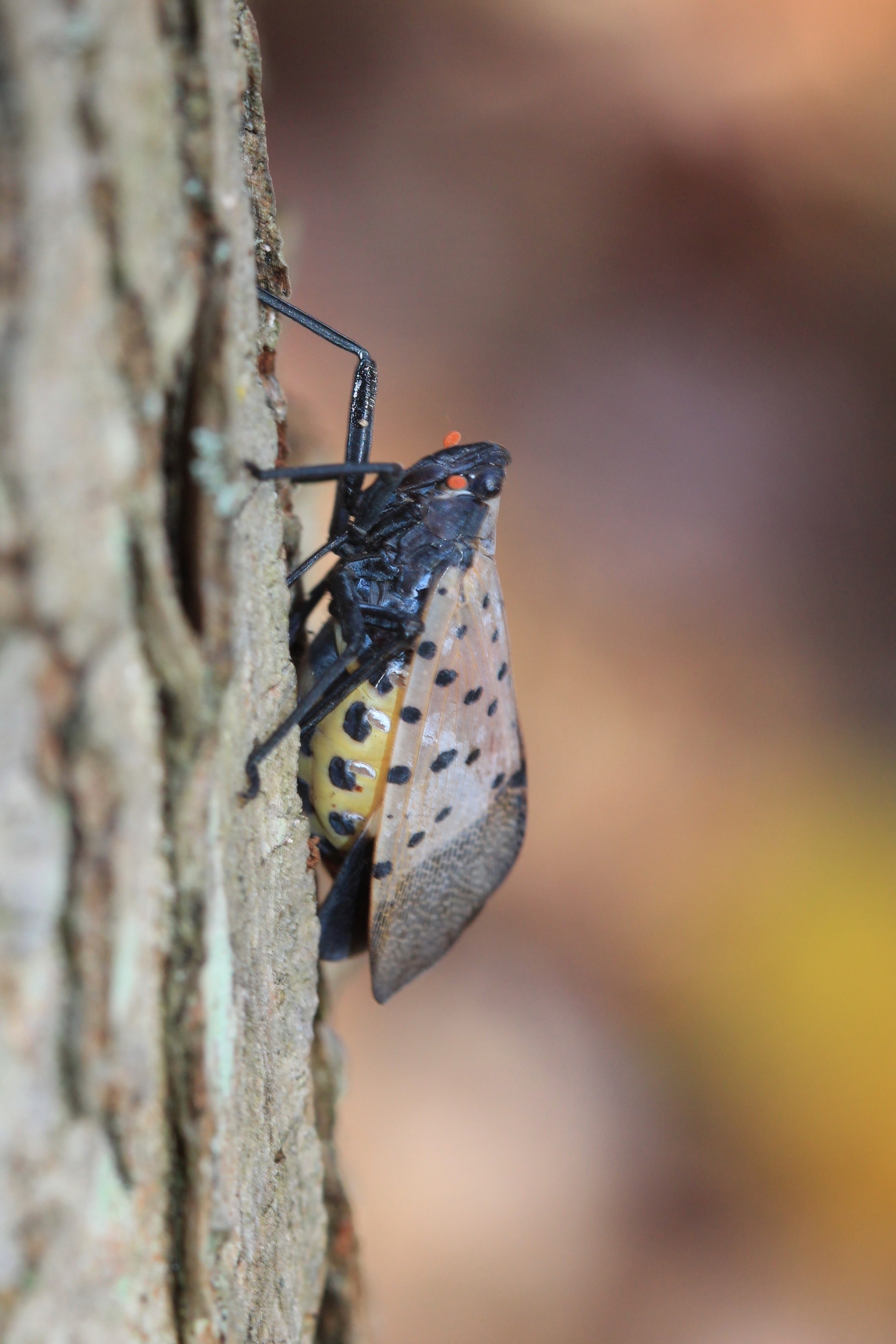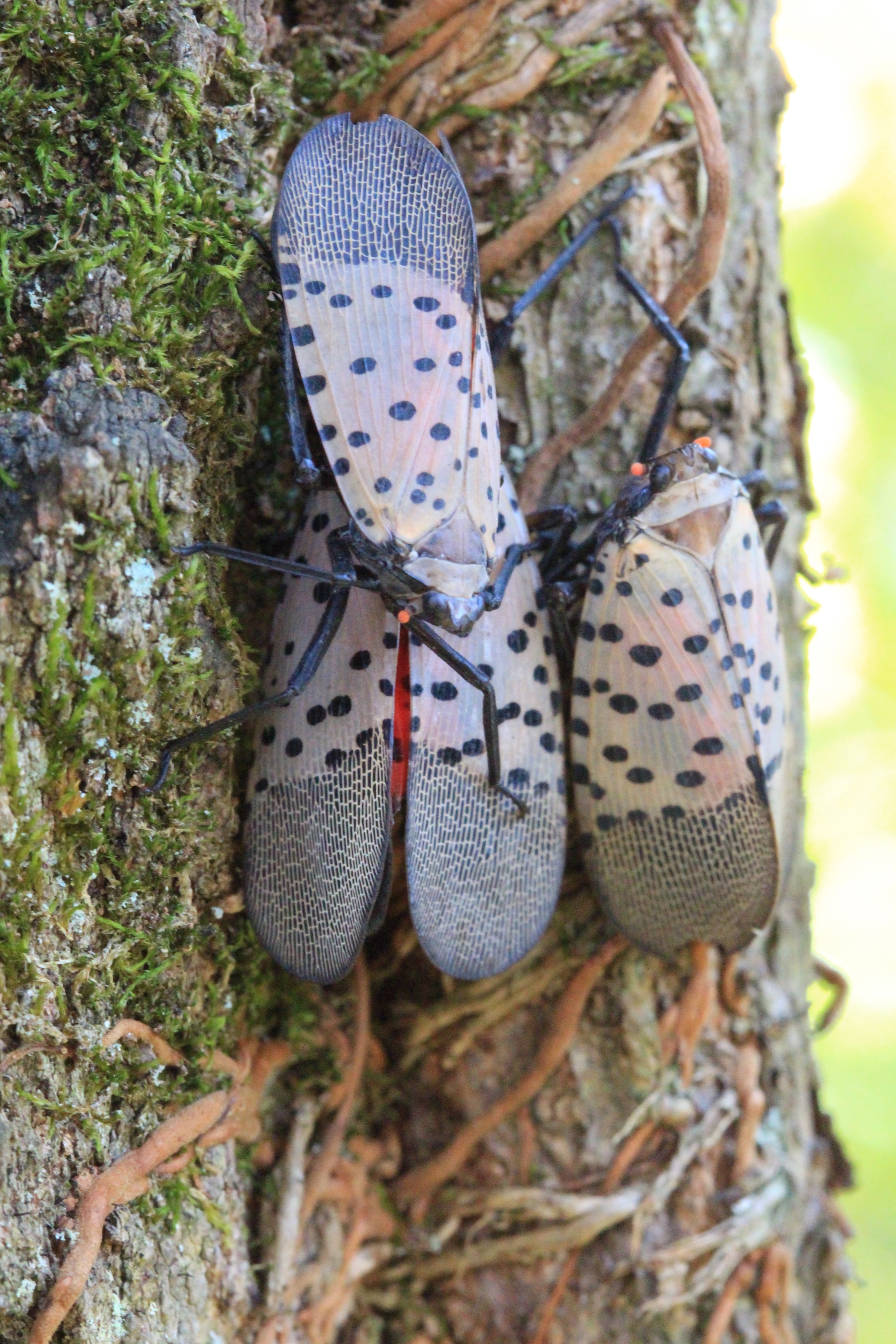Crow’s Nest: Enter the Spotted Lanternfly
By Daniel Barringer, Preserve Manager.

We found our first spotted lanternfly (Lycorma delicatula) here just a few weeks ago, and previously hadn’t seen any of the larvae or egg masses. Spotted lanternfly is an insect that has only been in this country three years and showed up at one location in Berks County, Pennsylvania, from which it has spread.

The adults are large and conspicuous (and beautiful!); throughout its lifespan the insect appears to be a pest of grapes and fruit trees, though it feeds upon many different tree species. You can find extensive resources on this pest on the Pennsylvania Department of Agriculture (PDA) web page. Sightings of the insect outside of its current known geographic spread should also be recorded through email on that website.

Above, you can see the yellow underside that seems to be where the “lantern” comes from in the name. Below, an egg mass and a lanternfly high on a red maple tree, out of reach of the usual recommended “egg scraping.” Egg masses should be scraped into a baggie with a bit of rubbing alcohol then added.

Below, a group of lanternflies, again too high on the tree to reach. Adult lanternflies aren’t thought to be strong fliers (and juveniles don’t fly at all), so some of their spread is from inadvertent movement of egg masses on objects people move: wood, equipment, materials stored or sourced outdoors. Each month more municipalities are added to the state’s quarantine list in an effort to slow the spread.

The lanternfly adult is a strong jumper if disturbed, however, and so it is not as easy to catch them as it looks. An awful lot is still unknown about this species so we have many more questions than answers.
Below, a cluster of lanternflies on Virginia creeper vine (Parthenocissus quinquifolia), a native member of the grape family where we frequently see them. The vine is growing on an oak tree along our Creek Trail. Mainly I see them on larger-diameter trees on which it looks like they are going to mate and lay eggs.

One of the byproducts of lanternflies is that they exude honeydew, the indigestible part of the plant juices on which the feed. Then a sooty mold colonizes the honeydew and looks like the spots on the trail arrow below. (At least, this arrow has been there for many years and never had this sooty mold before.) It has also been reported that there is frequent activity by yellow jacket wasps around the sweet honeydew.

There are many more photos and resources on the PDA website. Some of the photos on their site were taken by Lawrence Barringer, no known relation to me—but isn’t that cool?

At this point there are a few methods of managing the pest described on the PDA website:
- Avoid spreading the eggs by searching for egg masses and not moving materials without inspecting them first. This is part of the quarantine and is a legal order for areas with lanternflies.
- Search for and destroy egg masses when you find them.
- Sticky tape around the trunks of trees can keep juveniles from climbing into the trees—but this doesn’t work on adults that fly and sticky tape can catch many non-target species, including birds!
- The use of “trap trees.” Although lanternfly is not an obligate feeder on tree-of-heaven (Ailanthus altissima)—itself an invasive pest species—it is a preferred host. So killing all the ailanthus in the area, except a few male trees (ailanthus is dioecious, having male and female trees—only the female trees set seed) and then treating the few remaining trees with insecticide means that very little insecticide can have a large impact on lanternfly and a minimal impact on other insects. There are detailed instructions for this process on the PDA website.
Obviously there are limitations to all of these methods and it seems likely that some day this species will be much more widespread.
I’ll write more about efforts on our Natural Lands preserves in a near-future blog post!
